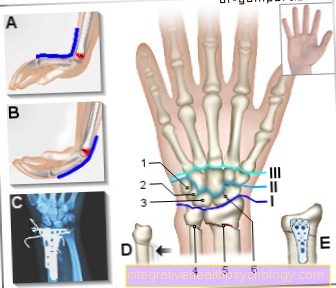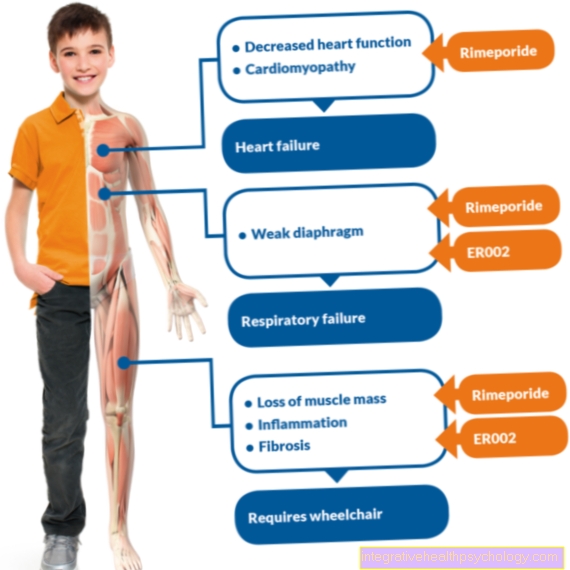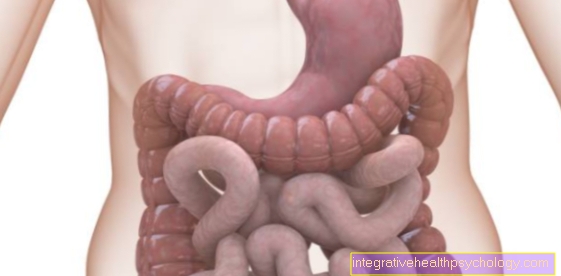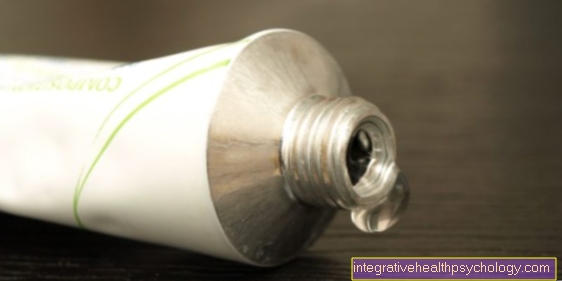Calcitonin
education

Formation of calcitonin:
The thyroid hormone calcitonin consists of protein and thus represents a peptide hormone. In contrast to T3 - T4 hormone, this hormone is produced in the C cells of the thyroid (parafollicular cells) educated. The effect of this hormone unfolds on the bones, in which the bone-degrading cells (Osteoclasts) are inhibited. Furthermore, more calcium is built into the bones.
regulation
Regulation of calcitonin:
The level of the hormone is determined by the calcium content of the blood. If you have high levels of calcium in your blood (Hypercalcemia) will hormone released so that it can be absorbed and incorporated into the bone. Some gastrointestinal hormones also increase the release of calcitonin, so that calcium ingested with food can be stored directly in the bones under the influence of the hormone.
function
The hormone calcitonin is related to the Calcium balancewhich it regulates. The antagonist here is the parathyroid hormone formed in the parathyroid glands.
Mode of action
Calcitonin belongs to the Hormones those of the thyroid to be produced. More precisely, it is from the C cells ("C" for calcitonin) synthesized by the thyroid gland.
The distribution this hormone takes place depending on the Calcium ion concentration in blood. Is this elevatedso will Calcitonin poured out to the Osteoclast activity to inhibit. The main task of osteoclasts is to resorb the bone substance. If their activity is inhibited, as is the case with the hormone calcitonin, calcium is no longer released from the bones into the blood. In addition, through Calcitonin also the excretion from Calcium, phosphate, magnesium, potassium and sodium through the kidneys elevatedwhich, however, plays a subordinate role compared to the inhibition of osteoclast activity. Ultimately, calcitonin also reduces the absorption of calcium in the intestine. In addition to the calcium ion concentration, can also gastrointestinal hormones how Pentagastrin the Calcitonin release stimulate. It is important that the administration of calcitonin in the case of normocalcemia, i.e. a calcium concentration in the blood within the normal range, does not result in a calcium concentration in the blood that is too low, as one might actually expect.
Preparations and application
For therapeutic purposes becomes synthetic Human calcitonin and synthetic Salmon calcitonin used.
Human calcitonin disappears from the blood faster and is not as effective as salmon calcitonin. Since the Calcitonin hormone around a protein (a polypeptide to be precise), it cannot be taken orally, i.e. through the mouth. It must parenteral, which literally means bypassing the bowel. Application options are therefore the subcutaneous injection (given under the skin) who intramuscular injection (given into a skeletal muscle) and the intravenous injection (given into a vein). Until 2012 it was in the form of a for certain diseases Nasal sprays applied.
operation area
Calcitonin is still used today for patients who have a Paget's disease (Disease of the skeletal system with increased and disorganized bone remodeling) and who do not respond to other treatment options or are not suitable for the treatment alternatives. One reason why another treatment would not be an option would be, for example severe renal impairment. Here should the treatment with calcitonin only for three months be performed. In addition, calcitonin has also been found in one Hypercalcemia, so one too high calcium ion concentration, as a result of a malignant disease. Finally, calcitonin may also be administered to prevent the further loss of bone mass in patients who have experienced sudden immobilization (temporary immobilization of parts of the body or the entire body) due to a broken bone prevent. In this case the treatment only for a maximum of two to four weeks be performed.
Since it's in Studies Evidence indicated that through the therapeutic use of calcitonin a increased risk For malignant diseases a calcitonin nasal spray should no longer be used to treat postmenopausal osteoporosis as the risk outweighs the benefit of treatment (unfavorable risk-benefit ratio). If treatment with such a preparation is carried out in the diagnosis of "postmenopausal osteoporosis", this should be changed at the next doctor's visit. Due to this fact, the calcitonin nasal spray has been withdrawn from the market. From now on, calcitonin will only be available in the form of infusion and injection solutions.
When the above diseases come Calcitonin continue to be used because studies have shown that the benefits of short-term treatment outweigh the risks. Despite this, one should if possible low dose be elected and the Treatment period to short as possible.
Adverse drug effects
The most common side effect with the gift of Calcitonin is a seizure occurring Facial flushing. This is also called "flush" designated. Other common adverse drug reactions are a tingly feeling or Feeling of warmth in the extremities. nausea, Vomit and Diarrhea can force treatment to be discontinued. Also one Hives (Urticaria) with wheals of the skin can occur as an undesirable drug effect. The effect of the therapeutic use of calcitonin decreases in the course of prolonged therapy. Furthermore elevated a Long term therapy with calcitonin that Cancer risk.
Cancer risk with long-term use
The European Medicines Agency (EMA) warns against long-term use of the Calcitonin nasal sprays at a postmenopausal osteoporosis, since it has only a limited effectiveness and apparently still that risk one Cancer increased by up to 2.4% compared to placebo (dummy drug without drug). As a result, it was decided to withdraw the intranasal preparations (nasal spray) from the market in 2012. Karil® and Miacalcic®, for example, were withdrawn from the market. As early as 2004, the control of the preparations was requested because two studies had delivered the result that an oral preparation, which was not even approved, the risk for a Prostate cancer had increased. In the meantime, subsequent studies have shown that not only the continuous use of the oral preparation increases the risk of prostate cancer, but also the nasal sprays. This not only increases the risk of prostate cancer, but also of others malignant diseases. The preparations for the Give into the vein remain on the market, however, as here the Risk-benefit ratio cheaper is to be assessed.
Side effects
The most common side effect with the gift of Calcitonin is a seizure occurring Facial flushing. This is also called "flush" designated. Other common adverse drug reactions are a tingly feeling or Feeling of warmth in the extremities. nausea, Vomit and Diarrhea can force treatment to be discontinued. Also one Hives (Urticaria) with wheals of the skin can occur as an undesirable drug effect. The effect of the therapeutic use of calcitonin decreases in the course of prolonged therapy. Furthermore elevated a Long term therapy with calcitonin that Cancer risk.





























